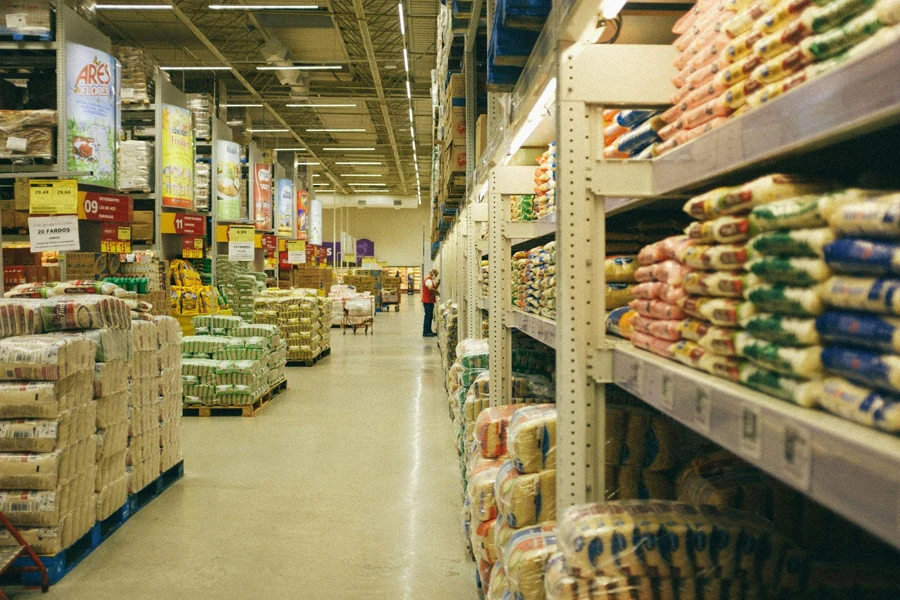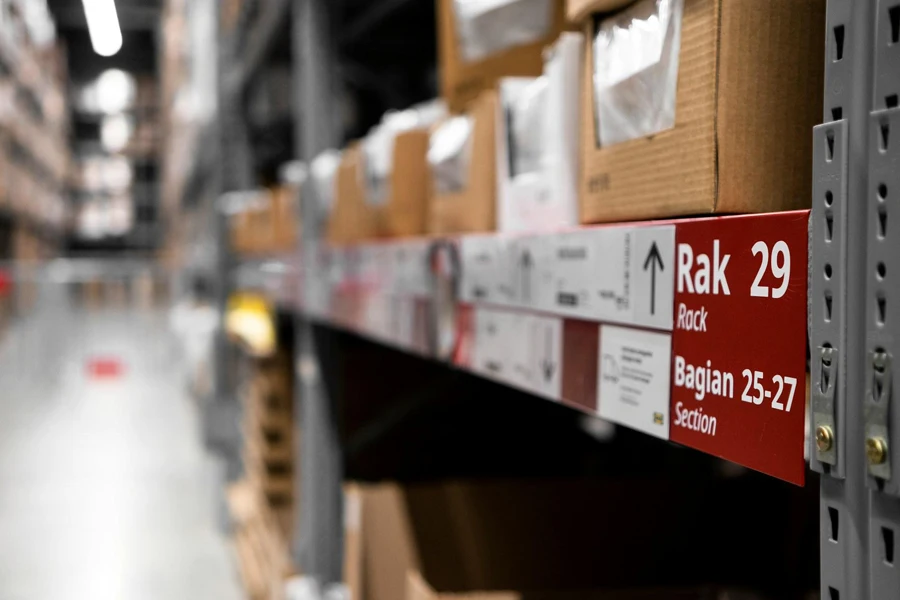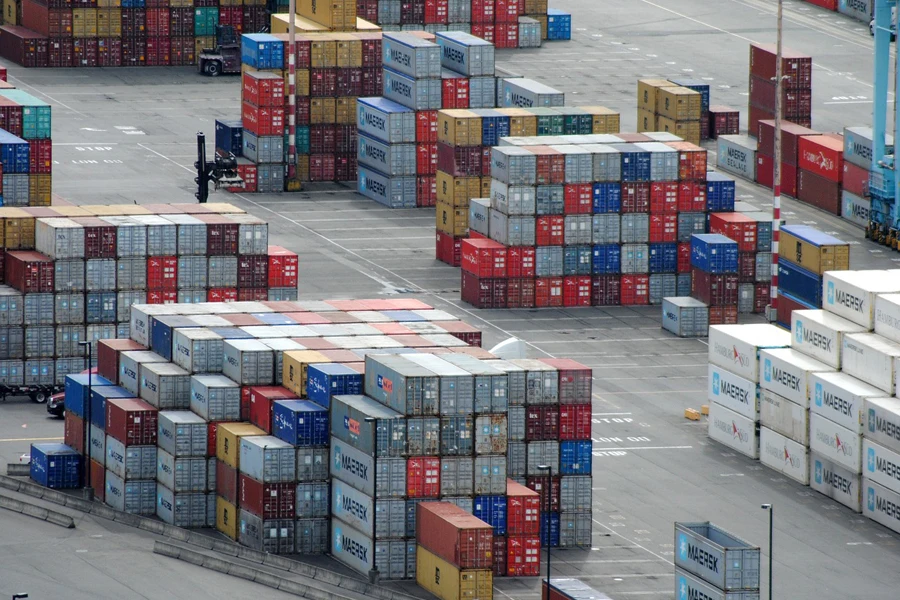From Judeo-Christian to Mesopotamian myths, it was believed that the entire human race once spoke a single language. The closest modern theory that echoes this idea is the Proto-human Language concept, developed in the early 20th century, which suggests that all modern human languages are thought to have descended from a common ancestral tongue.
Fast forward to today, a promising development is that, although we may seem far from those days when we all might have spoken the same language, we have achieved a similar unity in terms of a common trade language—established in the form of the Harmonized System (HS) since 1988.
Read on to discover more about what the Harmonized System is, its structure and classification methods, the benefits and challenges of using the Harmonized System, and its significant role in global trade.
Table of Contents
1. What is the Harmonized System?
2. Overview of HS codes
3. Benefits and challenges of using the Harmonized System
4. The importance of the Harmonized System in global trade
5. Unifying the diverse
What is the Harmonized System?

The Harmonized System (HS) is in fact the abbreviated name of “The Harmonized Commodity Description and Coding System.” It is an international product nomenclature system developed and maintained by the World Customs Organization (WCO). Within the WCO, the HS is governed by The International Convention on the Harmonized Commodity Description and Coding System, commonly known as the HS Convention, an international agreement adopted by the then Customs Co-operation Council (former name of WCO before 1994) on 14 June 1983.
While the HS Convention provides the legal and structural basis for the Harmonized System, it is the HS Committee, which was also set up by the Customs Co-operation Council, that has an operational role in maintaining and updating the system approximately every 5 to 6 years. Essentially, the HS Committee serves as an integral part of the HS Convention’s structure that works to ensure that the Convention’s provisions are uniformly interpreted and applied.
The most significant contribution of the Harmonized System, widely recognized and embraced by over 200 countries, is its standardized numerical method for classifying different international trade goods—the HS Codes. The HS Codes cover classifications for more than 98% of the merchandise traded globally. More about the structure and the implementation of the HS code will be elaborated upon in the subsequent section.
Overview of HS Codes

HS Codes structure
In a nutshell, an HS Code is a six-digit system that identifies over 5,000 commodity groups of products according to their major categories, specific classifications, detailed divisions, and exact descriptions. These can be succinctly summarized according to the following hierarchical structure in sequence:
1) Sections: Representing the broad categories of the product
2) Chapters: Specific classifications under the broad categories of the product
3) Headings: Detailed divisions under the specific classifications
4) Subheadings: Precise descriptions of the products under the detailed divisions, which also represent the 6-digit HS Codes in full.
Example of HS Codes

Thanks to the efforts of the WCO, the global adoption of HS Codes means that these product classifications and descriptions are now standardized internationally. Each country is allowed to extend these initial 6-digit standardizations to eight and ten digits to further detail their respective requirements for more specific classifications.
More information about these nationally tailored versions will be explained later under the Importance of HS Section. Here, using the main 21 Sections and the 97 Chapters and other Headings and Subheadings details available in the latest HS Nomenclature 2022 edition, let’s first take a look at a real example of the HS Codes for headphones and earphones, with or without microphones:
Detailed Breakdown for HS Codes of headphones and earphones, with or without microphones: 8518.30
1) Section XVI: Machinery and Mechanical Appliances; Electrical Equipment; Parts Thereof
2) Chapter 85: Electrical machinery and equipment; sound recorders and reproducers; television image and sound recorders and reproducers; parts and accessories
3) Heading 8518: Microphones; loudspeakers; headphones and earphones; combined or separate with microphones
4) Subheading 8518.30: Headphones and earphones; combined or separate with microphones; sets with microphones and loudspeakers.
Benefits and challenges of using the Harmonized System
Simplified tariff classification

Through its globally unified goods classification, HS Codes have greatly simplified international trade, particularly in terms of enhancing the efficiency of the import and export process. This is achieved by ensuring a thorough and accurate product categorization, which is readily identifiable via a logical structure. As a result, the tariff application process has become significantly streamlined. Since HS Codes allow all parties involved, including officials, traders, and governments, to accurately categorize and identify products, they also contribute to a smoother customs clearance process.
Consequently, customs authorities and regulatory bodies can effectively control and monitor the import and export of goods, while also reducing administrative costs and facilitating international trade.
Improved compliance and reduced errors
Another significant advantage of HS Codes to the monitoring and regulation of the international trade system is the improved compliance rate among the importers and exporters. The application of HS codes leads to accurate shipment reports and the completion of necessary documentation and with all these highly compliant and streamlined processes, worldwide customs authorities can identify products, apply tariffs, and collect trade statistics more efficiently.
This also minimizes errors among stakeholders by providing regular updates on HS Codes and highlighting potential penalties and other shipment-related issues that may impact businesses in cases of incorrect HS classification.
Complexity and misclassification issues

Despite all the accolades surrounding the HS Codes, their implementation and enforcement are not without issues and challenges. The total number of 5612 subheadings means there are a total of 5612 HS Codes. These codes cover an extensive range of products, which run the gamut from live animals to works of art and antiques, and hence can lead to frequent confusion and misclassification issues in view of their complex structure and large volume of diverse products involved.
Moreover, different adaptation versions and regulatory procedures in various countries can also cause inconsistencies in the Harmonized System due to a lack of uniformity at the country-specific level. On the whole, the complexity of HS codes signifies that businesses need to retain a certain degree of technical (classification) knowledge, and stay alert about updates to avoid any potential trade issues.
The importance of the Harmonized System in global trade

Facilitating international trade
The Harmonized System facilitates international trade in an exceptionally efficient and structured way. The introduction of HS Codes marks a significant milestone in global trade as it is the first time that there is a universal language for product classifications across international borders. Today, more than 35 years after the establishment of the HS Codes, the efficiency of worldwide customs authorities has greatly improved as identifying product categories for taxes and duties assessments can now be done in a consistent and systematic way, even for complex, large-volume shipments.

Instead of the hassle and inconsistent assessments of product descriptions in the past, the standardized classifications provided by the HS Codes reduce ambiguity and streamline customs procedures, aiding businesses to comply with international regulations more easily no matter how diverse their products, contributing to a smoother international trade.
An ever-evolving & meticulously maintained global trade framework
Not only is the HS Code the world’s first and most well-adopted international trade code, utilized by countries on every continent, but the dedicated efforts from the WCO in managing and maintaining the HS also ensure that it meets the evolving needs of international trade. This relevance and adaptability help it keep pace with rapidly changing technological innovations, emerging products, and global trade changes. In general, the proactive role of the WCO has ensured that the HS remains a continuously evolving and reliable international trade code that stays up-to-date and effective.
National adaptations and variations

Probably the most crucial aspect of HS Codes lies in their flexibility and adaptability which allows for national variations. It’s akin to knowing a universal language while also having the ability to customize it based on specific needs, allowing countries to create their own dialects to accommodate their respective countries’ requirements.
In fact, many countries extend the basic six-digit HS Codes to eight and ten digits for more detailed product categorizations. For example, from Australia to India, numerous nations have implemented such 8-digit adaptations. Here, let’s look at the following HS Codes adaptation examples by some of the world’s largest economies according to the latest studies:
1) The Harmonized Tariff Schedule (HTS) Codes used by the U.S.
Refer to the original example cited earlier for headphones and earphones. Instead of the standard six-digit HS Code at 8518.30, the HTS Code for this product category is 8518.30.10.00 and 8518.30.20.00, depending on specific features. Basically, the HTS Code system expands to 10 digits for additional classification details such as the presence of special features or components.
2) The China HS Code system
China’s HS code system was updated to a 13-digit format in 2018. The 7th-8th digits provide more specific details of the product, while the 9th-10th digits are additional customs supervision numbers, and the last three digits are for China Inspection and Quarantine (CIQ) purposes. Essentially, the first 10 digits follow the HS Code structure, while the last three digits are specific to China’s internal CIQ purposes. For example, the HS Code of 8518.30 for headphones in China becomes 8518.30.0000.101/102/103 according to their respective CIQ requirements.
3) The European Union Combined Nomenclature (CN) Code
Similar to many other countries, the CN Code of the EU expands the HS code to eight digits for further specifications relevant to EU customs and trade regulations. Using the same example, the CN Code for the HS Code of 8518.30 is 8518.3000.
Unifying the diverse

The Harmonized System Code represents a six-digit classification system that provides standardized numerical categorization for various commodity groups, covering classifications for more than 98% of worldwide traded goods and is currently adopted by more than 200 countries. The Harmonized System is developed by the World Customs Organization (WCO) and maintained by the HS Committee under it.
The HS Code identifies different products based on broader categories, specific categorizations, more in-depth divisions, and exact descriptions, each arranged in a logical structure within a hierarchical format that includes 21 Sections, 97 Chapters, 1,228 Headings, and 5,612 Subheadings.
A simplified tariff classification system significantly streamlines the entire international trade and customs process, resulting in a more efficient customs clearance procedure with the implementation of HS Codes. This is one of the most significant advantages of adopting HS Codes. Additionally, enhanced regulatory compliance among businesses, due to reduced errors, is facilitated by potential penalties and regular updates.
However, the complex nature of the Harmonized System can also lead to classification issues due to the large volume of headings and subheadings involved. Last but not least, the importance of the Harmonized System in global trade includes facilitating international trade, enhancing customs efficiency, underscoring the crucial role of the World Customs Organization (WCO), and illustrating its adaptation at a national level in various countries.
Unlock advanced logistics strategies and professional wholesale business tips at Alibaba.com Reads today. Gain exclusive insights from industry leaders and stay ahead of market trends. Begin now to uncover the inspiration for your next visionary business idea.

Looking for a logistics solution with competitive pricing, full visibility, and readily accessible customer support? Check out the Alibaba.com Logistics Marketplace today.



